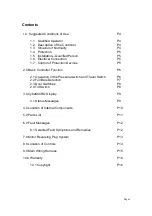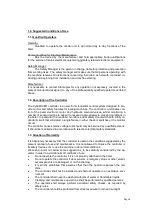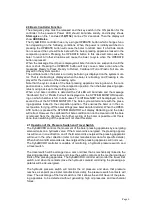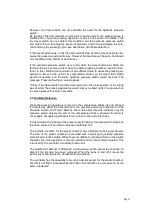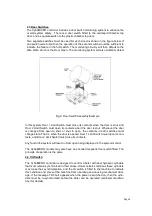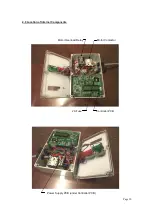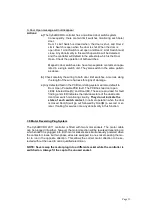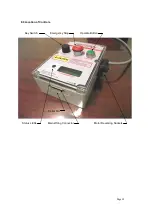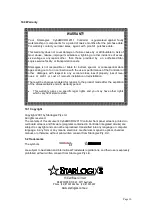
6.0 Fault Messages
Pressure SW Open
Indicates the pressure switch is remaining open. This is
tested by timing from when a hydraulic valve coil is ener-
gized, and if excessive time passes without the pressure
switch closing, the hydraulic valve coils and motor are
switched off and this message displayed. The most com-
mon causes are failed pressure switch, low hydraulic sys
tem pressure and oil leaks.
Tilt Fault
see section 2.3.1
6.1 Selected Fault Symptoms and Remedies
1. No Power - both power LED and SYSTEM MONITOR are off.
Actions:
a)
Ensure the mains outlet the baler is plugged into is energized.
b)
Visually inspect the wire connections inside the mains plug. Look
through the clear case—do not dismantle the plug. Only qualified
electricians are permitted to dismantle this plug.
c)
Ensure the power key switch is on and the emergency stop has been
released by rotating the knob.
d)
Remove the main wiring harness plug from the bottom of the con-
troller. If this clears the fault there is a short in the wiring harness
or one of the sensors on the baler.
If all of the above actions do not clear the fault the 2A fuse on the controller PCB may
be blown, or the 4A fuse on the power supply PCB may be blown. Ensure the mains
plug is disconnected and tagged out before opening the controller. If the 4A power
supply fuse continually blows replace power supply PCB. If the 2A controller PCB
fuse continually blows with the main wiring loom disconnected replace the controller
PCB. If the 2A controller PCB fuse only blows when the main wiring loom is con-
nected then there is a short in the wiring or sensors on the baler—find short and re-
pair.
2. Pressure SW Open – Fault Message
Actions:
a)
First check that the wires to the pressure switch are connected, and
there is no obvious damage to the wiring harness.
b)
Fit a hydraulic pressure gauge to the test port on the hydraulic power
pack. Close the baler door and ensure the controller is on and
READY is displayed in the System Monitor. Press the Operate
button and wait for the hydraulic cylinder to travel to the end of its
stroke, then observe the indicated hydraulic pressure. Check with
the baler manufacturers data to ensure the system pressure is
correct. If the pressure is low there is a hydraulic fault.
Note:
If travel switch is fitted this test can only be performed
with a full bale of cardboard in the baler, and only at the end of
the down compression stroke of the machine.
c)
Change the hydraulic pressure switch.
Page 12



